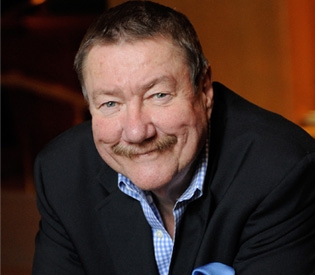Book World Loses Two Well-Known Authors

This week we lost two well- known authors- Robert B. Parker and Erich Segal. Both died of heart attacks. Robert B. Parker,77, was a prolific mystery writer, and creator of the character Spenser, a tough Boston detective who was the hero of almost 40 books, and which inspired the 1980’s TV show Spenser for Hire, which starred Robert Ulrich. Parker was apparently at work on a new novel when he collapsed at his desk.
Erich Segal, was best known for his 1970 novel and screenplay Love Story, which overnight made Segal a pop-culture phenomenon.Its signature line became a catch phrase: “Love means never having to say you’re sorry.” Segal also worked on the screenplay for the Beatles movie Yellow Submarine. Although he died of a heart attack in his home in London, Segal had also suffered from Parkinson’s Disease for 25 years, a disease shared by Muhammad Ali and Michael J. Fox.
What Is a Heart Attack? (Source: National Heart Lung and Blood Institute)
A heart attack occurs when blood flow to a section of heart muscle becomes blocked. If the flow of blood isn’t restored quickly, the section of heart muscle becomes damaged from lack of oxygen and begins to die.
Heart attack is a leading killer of both men and women in the United States. But fortunately, today there are excellent treatments for heart attack that can save lives and prevent disabilities. Treatment is most effective when started within 1 hour of the beginning of symptoms. If you think you or someone you’re with is having a heart attack, call 9–1–1 right away.
Overview
Heart attacks occur most often as a result of a condition called coronary artery disease (CAD). In CAD, a fatty material called plaque (plak) builds up over many years on the inside walls of the coronary arteries (the arteries that supply blood and oxygen to your heart). Eventually, an area of plaque can rupture, causing a blood clot to form on the surface of the plaque. If the clot becomes large enough, it can mostly or completely block the flow of oxygen-rich blood to the part of the heart muscle fed by the artery.
Heart With Muscle Damage and a Blocked Artery
Figure A is an overview of a heart and coronary artery showing damage (dead heart muscle) caused by a heart attack. Figure B is a cross-section of the coronary artery with plaque buildup and a blood clot.
During a heart attack, if the blockage in the coronary artery isn’t treated quickly, the heart muscle will begin to die and be replaced by scar tissue. This heart damage may not be obvious, or it may cause severe or long-lasting problems.
Severe problems linked to heart attack can include heart failure and life-threatening arrhythmias (irregular heartbeats). Heart failure is a condition in which the heart can’t pump enough blood throughout the body. Ventricular fibrillation is a serious arrhythmia that can cause death if not treated quickly.
Get Help Quickly
Acting fast at the first sign of heart attack symptoms can save your life and limit damage to your heart. Treatment is most effective when started within 1 hour of the beginning of symptoms.
The most common heart attack signs and symptoms are:
* Chest discomfort or pain—uncomfortable pressure, squeezing, fullness, or pain in the center of the chest that can be mild or strong. This discomfort or pain lasts more than a few minutes or goes away and comes back.
* Upper body discomfort in one or both arms, the back, neck, jaw, or stomach.
* Shortness of breath may occur with or before chest discomfort.
* Other signs include nausea (feeling sick to your stomach), vomiting, lightheadedness or fainting, or breaking out in a cold sweat.
If you think you or someone you know may be having a heart attack:
* Call 9–1–1 within a few minutes—5 at the most—of the start of symptoms.
* If your symptoms stop completely in less than 5 minutes, still call your doctor.
* Only take an ambulance to the hospital. Going in a private car can delay treatment.
* Take a nitroglycerin pill if your doctor has prescribed this type of medicine.
























0 comments